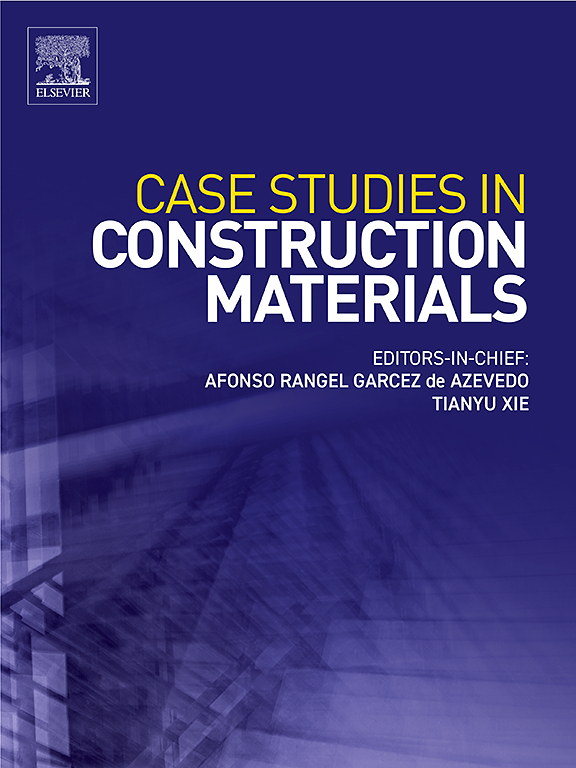水膜和膏膜厚度对3D打印低水泥超高性能混凝土可打印性的影响
IF 6.6
2区 工程技术
Q1 CONSTRUCTION & BUILDING TECHNOLOGY
引用次数: 0
摘要
为了解决3D打印混凝土的局限性,例如低延性和易开裂,3D打印低水泥超高性能混凝土(3D - lc - uhpc)的发展是一种有效的方法。然而,这种材料的复杂多变的组成使得阐明组成和可印刷性之间的关系具有挑战性,这反过来又限制了材料的设计。本研究将采用膜厚理论建立3d - lc - uhpc的组成、结构和可打印性之间的关系,以水膜厚度和浆料膜厚度作为结构参数。流变性能与水膜厚度的相关系数R2值至少为0.9。水膜厚度(WFT)和膏膜厚度(PFT)对材料的可打印性(可挤压性和可构建性)的综合影响显著,两者之间的相关系数为0.85。验证了薄膜厚度理论用于优化3d - lc - uhpc打印性能的可行性,并推荐了WFT和PFT的合适范围。本文章由计算机程序翻译,如有差异,请以英文原文为准。
Effect of water film and paste film thicknesses on printability of 3D printed low cement UHPC
To address the limitations of 3D printed concrete, such as low ductility and susceptibility to cracking, the development of 3D printed low cement ultra-high performance concrete (3DP-LC-UHPC) represents an effective approach. However, the complex and variable composition of this material makes it challenging to elucidate the relationship between composition and printability, which in turn constrains material design. In this study, the film thickness theory will be employed to establish the relationship between composition, structure, and printability of 3DP-LC-UHPC, utilizing water film thickness and paste film thickness as structural parameters. Correlations of the rheological properties to the water film thicknesses yielded R2 values of at least 0.9. The combined effect of water film thickness (WFT) and paste film thickness (PFT) on the printability (extrudability and buildability) of the material is significant, with a correlation coefficient of 0.85 between them. The feasibility of film thickness theory applied to optimize the printability of 3DP-LC-UHPC is verified and suitable ranges of WFT and PFT are recommended.
求助全文
通过发布文献求助,成功后即可免费获取论文全文。
去求助
来源期刊

Case Studies in Construction Materials
Multiple-
CiteScore
7.60
自引率
19.40%
发文量
842
审稿时长
63 days
期刊介绍:
Case Studies in Construction Materials provides a forum for the rapid publication of short, structured Case Studies on construction materials. In addition, the journal also publishes related Short Communications, Full length research article and Comprehensive review papers (by invitation).
The journal will provide an essential compendium of case studies for practicing engineers, designers, researchers and other practitioners who are interested in all aspects construction materials. The journal will publish new and novel case studies, but will also provide a forum for the publication of high quality descriptions of classic construction material problems and solutions.
 求助内容:
求助内容: 应助结果提醒方式:
应助结果提醒方式:


